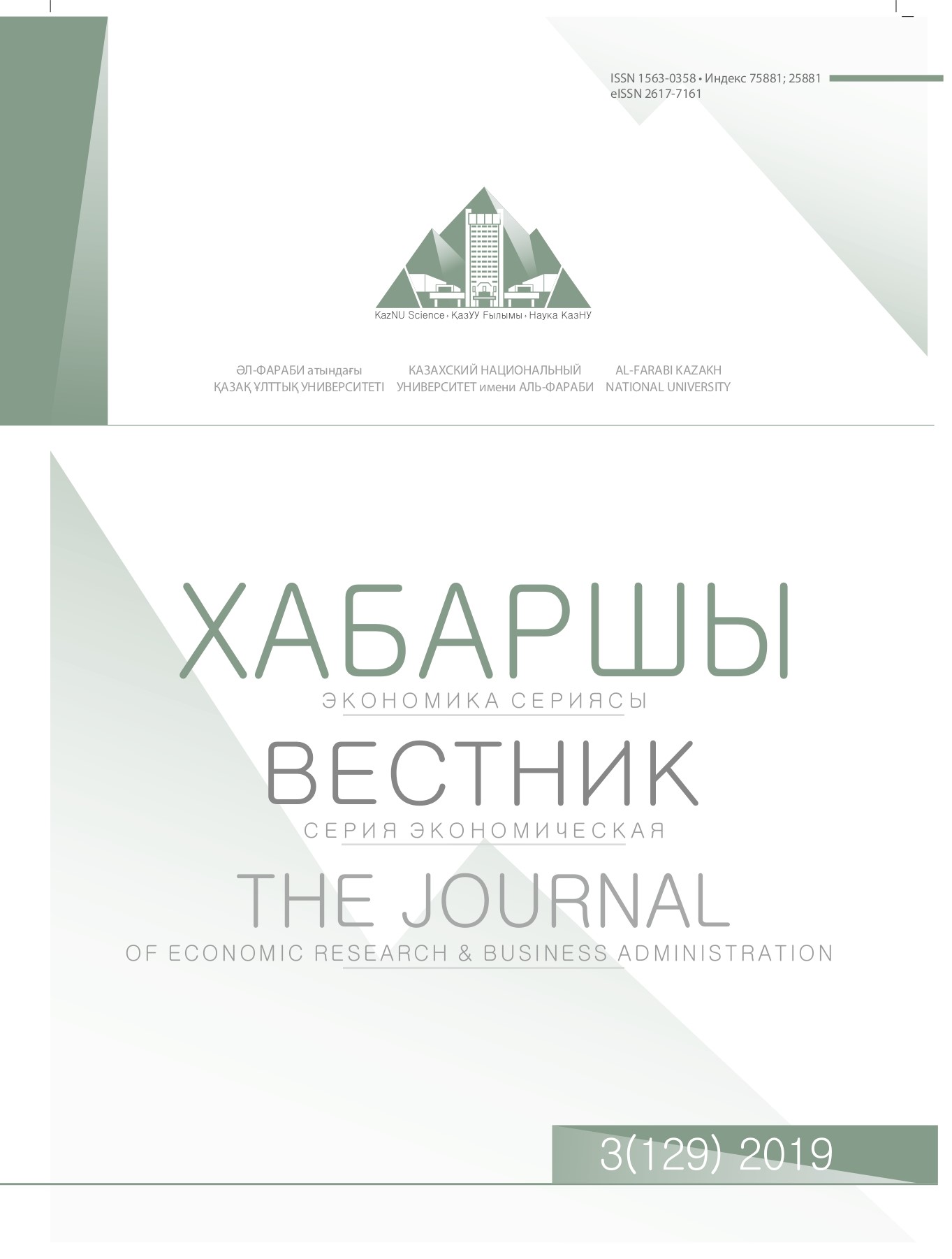Connection of economic industrialization with changes in the structure of gross regional product
DOI:
https://doi.org/10.26577/be-2019-3-e16Abstract
The article is devoted to the problem of accelerating the industrialization processes of a number of regions of Kazakhstan in order to develop an export-oriented economy. A review of foreign literature on the features of industrialization of the economy is presented. The results of the analysis of indicators of the share of gross regional product of the regions of Kazakhstan in the overall indicator for the country are given. Advancing in comparison with a national average indicator of growth rate of a gross regional product per capita in the Akmola, East Kazakhstan, Jambyl, Karaganda, Almaty, North Kazakhstan regions, Almaty, Astana. Indicators of structure of a gross regional product are calculated in a section of goods and services in regions of RK for the analyzed period, increase in a share of services in regions of RK is revealed: Kzylorda from 47.0 to 55.19%; Aktobe from 48.1 to 54.02%, Jambyl from 63.1 to 65.58%, SKR from 58.3 to 60.85%, Astana from 84.1 to 85.29%, Almaty from 91.1 to 92.85%. The revealed trends characterize growth of services sector and decrease in a share of production of goods. The analysisis made the maintenance of a gross regional product of SKR in 2018 with distribution of sizes to the Turkestan region and Shymkent. It is established that a primary share of investments, the industrial output and construction are placed in Shymkent. The conclusion is drawn on need of development of industrialization of regions of SKR; offers are given on creation new processing production into agrarian and industrial complex, to development of export-oriented productions.




